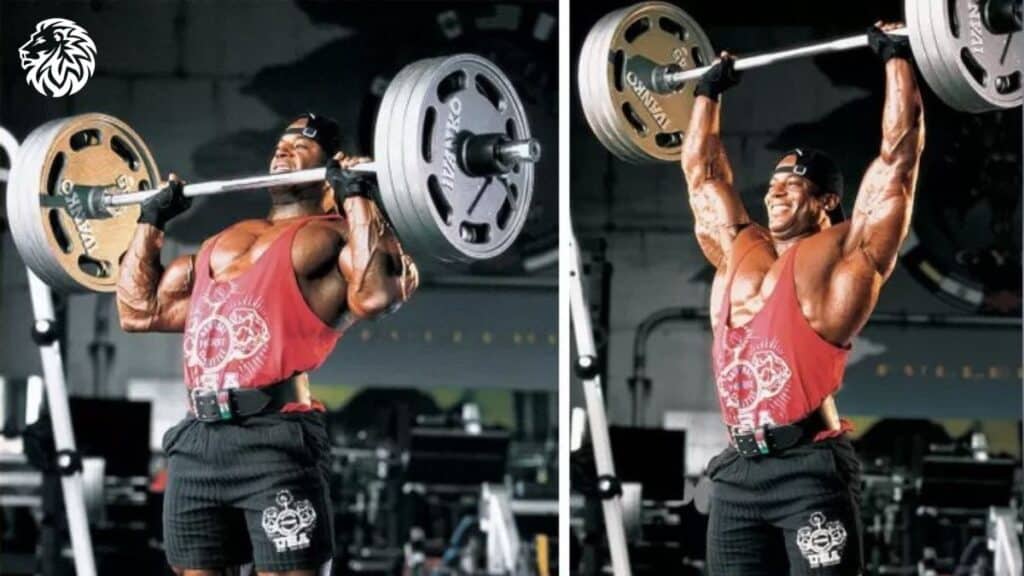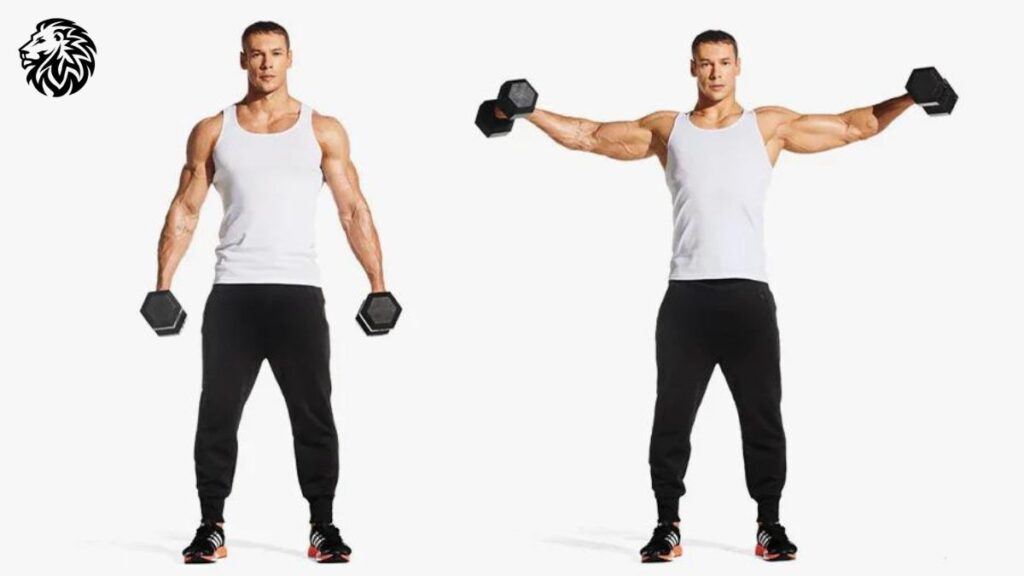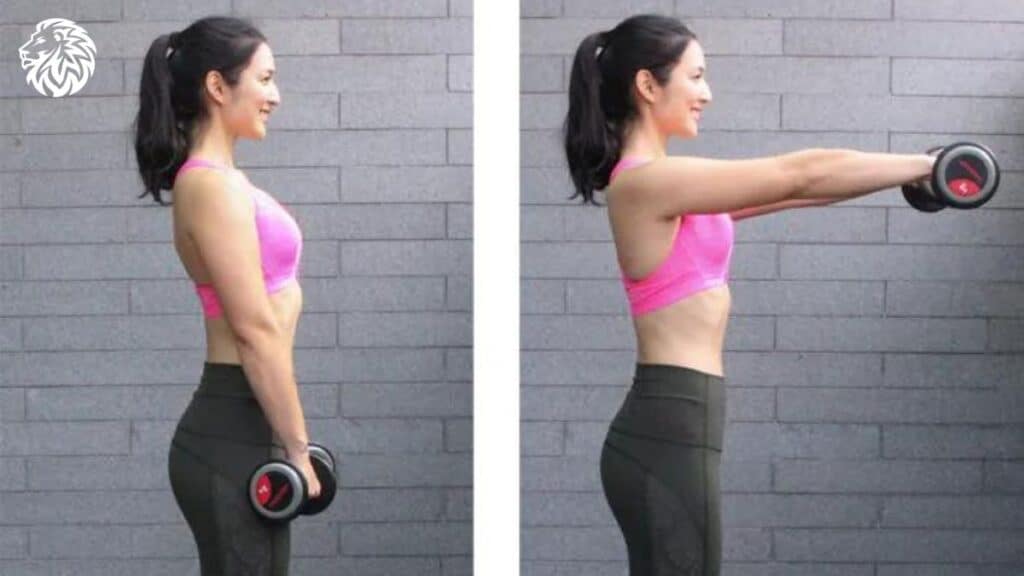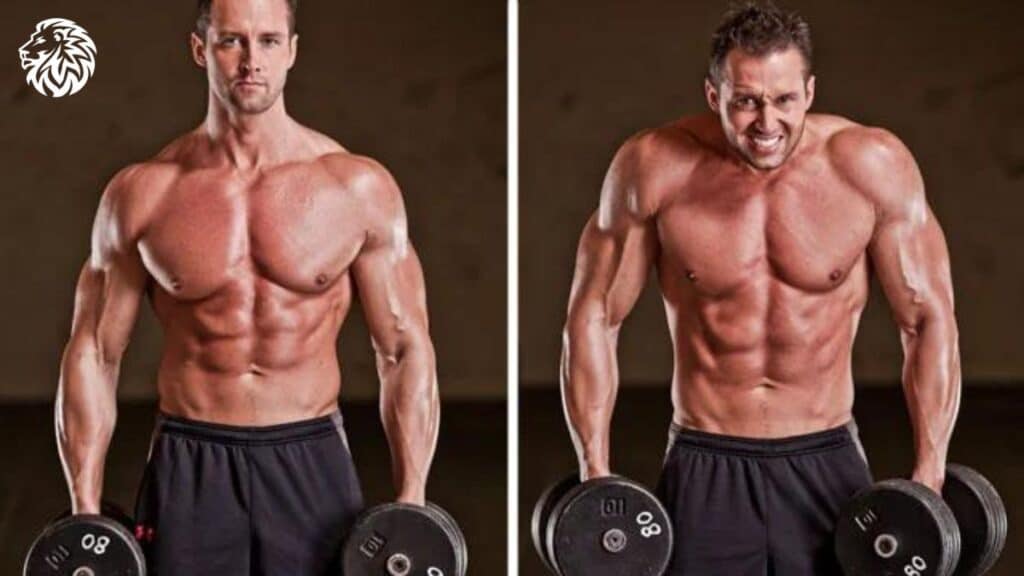Shoulder workouts aren’t just for bulking up and looking good – they play a key role in a balanced fitness program. Beyond the aesthetic appeal of strong shoulders, they come with a wealth of health perks. These include anything from better posture and enhanced strength for everyday tasks to leveling up your sports performance. Plus, paying attention to shoulder strength can significantly cut down your injury risk, particularly if your activities involve lots of upper body work.
However, there’s a right way and a wrong way to workout your shoulders. If you want to unlock the full potential of these exercises while avoiding strain or injury, form and technique matter. Incorrect movements can stress your shoulder joints and muscles, putting you on a fast track to injury. We will guide you through some top-notch shoulder exercises. Remember, the key is to maintain proper form and adhere to safety guidelines. If you’re new to weightlifting or dealing with health conditions that might impact your exercise routine, always seek advice from a healthcare professional or a certified trainer.
Understanding Shoulder Anatomy

The shoulder is among the most intricate joints in our bodies, thanks to its extensive range of motion. It’s made up of a mix of structures, all working together to afford this flexibility.
In general terms, the shoulder anatomy is a blend of bones, muscles, and joints. Your shoulder’s skeletal structure is made up of the clavicle (your collarbone), scapula (your shoulder blade), and humerus (your upper arm bone). The muscles that move your shoulders are made up of the deltoids, the trapezius, and the rotator cuff. The other muscles controlling your shoulders are the supraspinatus, infraspinatus, teres minor, and subscapularis. All of the elements connect at various points to control the shoulder’s movements. The most notable joints being the glenohumeral joint (the ball-and-socket joint we usually think of as the shoulder) and the acromioclavicular joint (where your collarbone and shoulder blade meet).
Different shoulder muscles are responsible for different movements. Take the deltoid as an example – it splits into three parts – the anterior (front), middle, and posterior (back) deltoids. Each segment contributes to different actions. The anterior deltoid primarily helps with shoulder abduction when your arm is moving in front of you (like picking up a suitcase). The middle deltoid comes into play during shoulder abduction when your arm is at your side (think of a lateral arm raise). The posterior deltoid is part of transverse extensions (as when you’re doing a reverse fly). Lastly, the rotator cuff muscles are vital for stabilizing the shoulder joint during these movements, permitting your arm to rotate.
Why Focusing on Shoulder Strength is Essential
Shoulder strength plays a significant role in overall upper body strength. Many upper body movements, from weightlifting exercises like bench presses and push-ups to functional movements like throwing a ball, rely on the power of the shoulder muscles. A weak shoulder can limit your strength in these exercises and hinder your overall upper body development. For instance, strong shoulders can increase your stability in exercises such as the bench press, allowing you to lift heavier weights safely.
In daily life, the strength of your shoulders impacts a wide range of activities. From lifting groceries to reaching for items on high shelves, strong shoulders make these tasks easier and more efficient. If your job involves physical labor, particularly tasks that require lifting or carrying, strong shoulders are essential for performing your best and avoiding fatigue. Even in non-physical jobs, shoulder strength can help maintain good posture during long hours at a desk, reducing the risk of back pain and strain.
Shoulder strength also plays a crucial role in injury prevention. Our shoulders are part of countless movements we make, making them an easy target for injuries, especially when the muscles are underpowered. Pumping up your shoulders can shield them from common injuries like strains, sprains, dislocations, and more. This protection is particularly handy if you’re into sports that require a lot of throwing or overhead actions, like basketball, swimming, or tennis. Plus, a strong set of shoulders can keep at bay the imbalances that might surface if you overwork other muscles, such as the chest or back, paving the way for a well-rounded and healthy body.
Warm-Up Exercises for Shoulder Workouts
Warming up before any form of exercise is crucial, and shoulder workouts are no exception. A warm-up raises your body temperature, enhances blood flow to your muscles, and prepares your body for the increased demand of the exercises to come. This is particularly important for the shoulder joint, given its complexity and susceptibility to injury. A proper warm-up can increase the flexibility and mobility of the shoulder muscles and joints, reducing the risk of strains and other injuries.
Here’s a brief guide on effective warm-up exercises for shoulders:
- Arm Circles: Extend your arms out to the sides and slowly make circles in the air with your arms, first forward for 30 seconds, then backward for another 30 seconds.
- Shoulder Rolls: Stand tall and roll your shoulders backward in a circular motion, and then forward. Do this for about a minute.
- Cross-Body Arm Swings: Stand tall with your feet shoulder-width apart. Swing your arms in front of your body, then out to the sides. Do this for about a minute.
- Wall Slides: Stand against a wall with your back and arms flat against it. Slide your arms up above your head and then back down. Do this 10-15 times.
- Band Pull-Aparts: Hold a resistance band with both hands in front of you at shoulder height. Keeping your arms straight, pull the band apart and squeeze your shoulder blades together. Perform 15-20 repetitions.
Remember, the goal of a warm-up is to prepare your body for the workout to come, not to fatigue your muscles. The warm-up should feel relatively easy and should not leave your muscles tired.
Top 6 Exercises For Better Shoulder Workouts
1. Overhead Shoulder Press

The overhead shoulder press is a classic strength training exercise that primarily targets the deltoids but also engages the trapezius and upper pectoral muscles. This compound exercise is excellent for developing upper body strength and muscular endurance, as well as improving your posture and stability by engaging your core muscles during the lift.
How to perform:
- Stand upright or sit on a bench with back support, feet shoulder-width apart.
- Hold a barbell or dumbbells at shoulder height with your palms facing forward.
- Press the weights up until your arms are fully extended above your head.
- Pause at the top for a moment, then slowly lower the weights back to the starting position.
- Ensure your back remains straight and your core engaged throughout the movement.
2. Lateral Raises

Lateral raises are isolation exercises that primarily target the middle portion of the deltoids, helping to enhance shoulder width and definition. They also engage the upper traps and the supraspinatus, one of the four rotator cuff muscles, promoting overall shoulder stability.
How to perform:
- Stand upright with your feet hip-width apart, holding a dumbbell in each hand by your sides, palms facing inwards.
- Keeping a slight bend in your elbows, lift the weights out to the sides until they’re at shoulder height and your body forms a “T” shape.
- Pause at the top for a moment, then slowly lower the weights back to the starting position.
- Keep your torso still throughout the movement, and ensure the lift is controlled, not relying on momentum.
3. Front Raises

Front raises are excellent for isolating the anterior deltoids. They also work the middle deltoids, upper pecs, and serratus anterior, a muscle that runs along the sides of your chest underneath the pecs. This exercise can help improve the appearance and strength of the upper body.
How to perform:
- Stand upright with your feet shoulder-width apart, holding a dumbbell in each hand in front of your thighs, palms facing towards you.
- Keeping your elbows slightly bent and the rest of your body still, lift the weights in front of you until your arms are parallel to the ground.
- Pause at the top for a moment, then slowly lower the weights back to the starting position.
- Keep the movement controlled, avoiding swinging the weights or using your back to lift.
4. Reverse Fly

The reverse fly is an exercise that primarily targets the rear deltoids, while also engaging the middle deltoids, trapezius, and rhomboids. This exercise is essential for promoting balanced shoulder development, as well as enhancing posture and stability by strengthening the muscles that retract the shoulder blades.
How to perform:
- Stand with feet hip-width apart and a dumbbell in each hand. Lean forward at your hips, keeping your back straight, until your torso is nearly parallel with the floor.
- Extend your arms straight down from your shoulders, palms facing each other.
- With a slight bend in your elbows, raise the weights out to the sides and up until they’re in line with your body, squeezing your shoulder blades together.
- Pause at the top for a moment, then slowly lower the weights back to the starting position.
- Keep the movements slow and controlled to ensure that you’re using your muscles, not momentum.
5. Face Pulls

Face pulls primarily target the rear deltoids, trapezius, and rhomboids, and they also work the rotator cuff muscles. This exercise is key for improving posture, shoulder mobility, and upper body strength, and it’s especially beneficial for individuals who spend a lot of time at a desk or computer.
How to perform:
- Set a rope attachment on a cable machine to chest height.
- Stand a few feet back from the machine, grab the rope with both hands, and step back to create tension.
- Pull the rope towards your face, separating your hands as you do so and squeezing your shoulder blades together. Your elbows should be higher than your wrists at the end of the movement.
- Pause for a moment, then slowly extend your arms back to the starting position, keeping the movement controlled.
6. Shoulder Shrugs

Shoulder shrugs primarily target the trapezius muscles, which extend down the back of your neck and upper spine. Strong traps can enhance neck and upper back strength and stability, improve posture, and contribute to a balanced and powerful upper body appearance.
How to perform:
- Stand tall with a dumbbell in each hand, arms fully extended, and palms facing your torso.
- Keep your arms straight and lift your shoulders as high as possible, as if trying to touch your ears.
- Pause at the top of the movement for a moment, then slowly lower your shoulders back to the starting position.
- Ensure you’re moving just your shoulders, not your arms, and keep the rest of your body still.
Weekly Workout Plan for Stronger Shoulders
Monday: Shoulder Strength Workout
- Warm-Up Exercises (10 minutes)
- Overhead Shoulder Press: 3 sets of 12 reps
- Lateral Raises: 3 sets of 12 reps
- Front Raises: 3 sets of 12 reps
Tuesday: Rest or Cardio
Wednesday: Shoulder Endurance Workout
- Warm-Up Exercises (10 minutes)
- Shoulder Shrugs: 3 sets of 15-20 reps
- Face Pulls: 3 sets of 15-20 reps
- Reverse Fly: 3 sets of 15-20 reps
Thursday: Rest or Cardio
Friday: Combined Shoulder Workout
- Warm-Up Exercises (10 minutes)
- Overhead Shoulder Press: 3 sets of 10 reps
- Lateral Raises: 3 sets of 10 reps
- Front Raises: 3 sets of 10 reps
- Reverse Fly: 3 sets of 15 reps
Saturday: Rest or Cardio
Sunday: Rest
The exercises in this workout plan target all parts of the shoulder for balanced strength and development. Always remember to maintain proper form throughout each exercise to maximize effectiveness and minimize the risk of injury. You may adjust the number of sets and reps according to your fitness level.
Safety Tips and Avoiding Common Mistakes
Common pitfalls to avoid during shoulder workouts
- Using too much weight: It’s common to overestimate how much weight you can lift, especially for beginners. Using excessive weight can lead to improper form, which may result in injuries. Start with lighter weights and progressively increase as your strength improves.
- Relying on momentum: Some individuals use momentum to lift weights, especially during exercises like lateral raises or front raises. This reduces the effectiveness of the exercise and increases the risk of injury.
- Neglecting the rear deltoids: Many people focus on the anterior and middle deltoids and forget the rear deltoids, resulting in muscle imbalances. Include exercises like reverse fly and face pulls in your routine to target the rear deltoids.
Advice on proper form and safety during shoulder workouts
- Maintain proper posture: Keep your back straight and chest up during all exercises. This position provides a solid base, reduces stress on the spine, and helps you maintain balance.
- Control your movements: Perform all movements in a slow, controlled manner. This ensures that your muscles are doing the work, not momentum, and it reduces the risk of injury.
- Don’t lock your joints: Keep a slight bend in your elbows and knees during exercises. Locking the joints puts unnecessary stress on them and can lead to injury.
Conclusion
To wrap things up, shoulder workouts aren’t a nice-to-have – they’re a must-have in any balanced fitness regime. They bring a host of benefits to the table, from boosting your upper body strength and making everyday tasks easier, to keeping injuries at bay. By focusing on exercises that target all areas of the deltoids and their companion muscles, you can build up balanced, strong, and healthy shoulders. The result? A top-notch physique and improved performance in sports and other physical activities.
It doesn’t match whether you are a new to strength training or a seasoned pro, weaving these exercises into your routine can make a world of difference to your shoulder health and overall fitness levels. Always remember to maintain proper form and prioritize safety, tune into your body’s needs, and keep up with your workouts consistently. After all, building stronger shoulders is more of a long-distance run than a sprint, and every bit of progress takes you one step closer to optimal health and wellbeing. So keep challenging yourself, stay driven, and relish your journey towards becoming the strongest version of you.
Frequently Asked Questions
I often feel pain in my shoulder during workouts, even when using light weights. What could be the problem?
Pain during workouts, especially in a complex joint like the shoulder, may indicate an issue that needs attention. You might be dealing with a form error, overuse, muscle imbalance, or even an underlying injury. It’s critical to not ignore this pain. Consider consulting with a healthcare or fitness professional who can assess your situation and guide you on the proper course of action.
How can I ensure that I am evenly working out all three parts of my deltoids during my shoulder workouts?
To ensure a balanced workout for your deltoids, include exercises that target the anterior (front), lateral (middle), and posterior (rear) parts of the muscle. For instance, front raises target the anterior deltoid, lateral raises target the middle deltoid, and reverse flys target the posterior deltoid. Incorporating a mix of these exercises in your routine can help ensure balanced shoulder development.
I don’t have access to weights or a gym. Can I still do effective shoulder workouts at home?
Absolutely! While weights can add resistance to your workouts, there are plenty of bodyweight exercises, such as push-ups, pike push-ups, and wall walk-ups, that can effectively work your shoulder muscles. If you have resistance bands, those can also be a versatile tool for shoulder exercises like band pull-aparts or band shoulder presses.
I’ve heard that the shoulder is a very vulnerable joint. How can I protect my shoulders during workouts?
Indeed, the shoulder joint, with its broad scope of movement, is somewhat prone to injury. To keep your shoulders safe, be sure to warm up well before diving into your workout, stick to good form for each exercise, and avoid biting off more weight than you can chew. Also, remember to incorporate exercises that give your rotator cuff muscles a workout – they’re a big deal when it comes to keeping your shoulders stable.
I’m just starting out with strength training. How often should I do shoulder workouts?
If you’re just dipping your toes into the strength training waters, kick off with a couple of days of shoulder workouts every week. This ensures your muscles have plenty of time to rest up and bounce back between sessions. As you grow more comfortable and your muscles get used to the new routine, you can think about upping the frequency, tailored to your goals and how your body reacts. But don’t forget, pushing yourself too hard can sometimes backfire – overdoing it may pave the way for injuries and put a speed bump in your progress journey. So take it easy and listen to your body.







